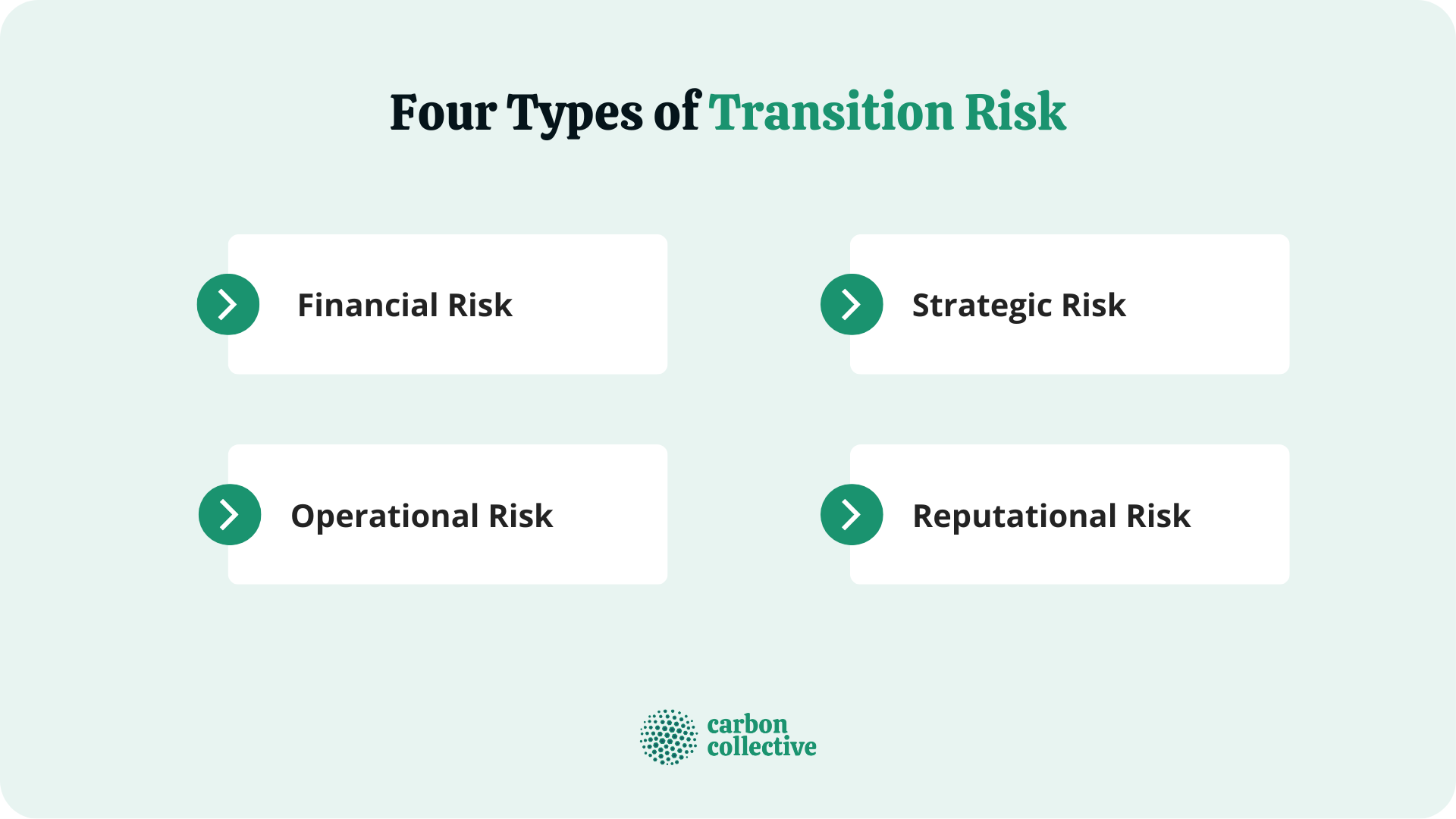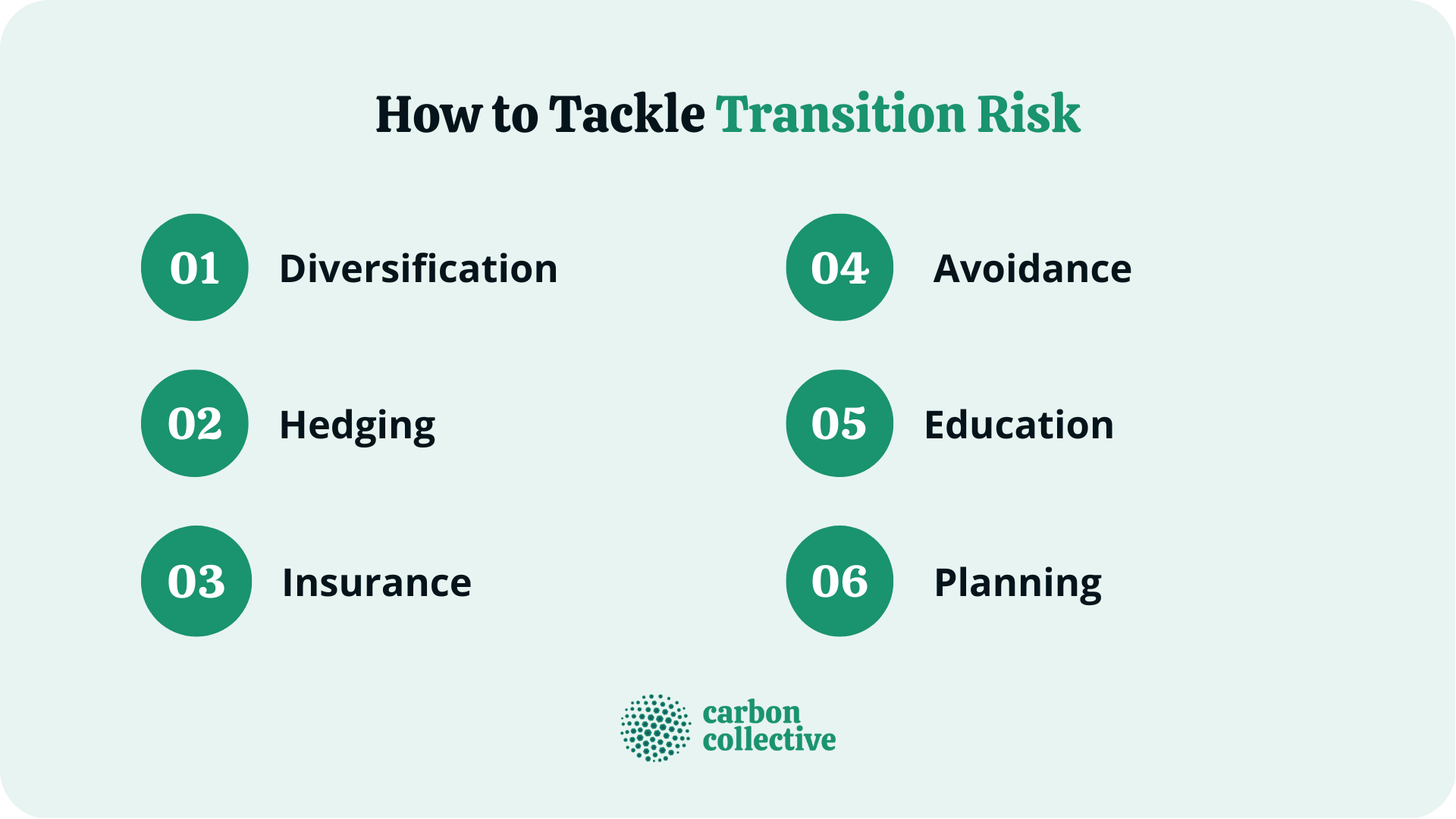What Is a Transition Risk?
Transition risk is the likelihood of an adverse event occurring during a change in status or circumstances. The term is often used in the context of investments but can apply to any situation with potential loss.
It is important to note that transition risk differs from market risk, which is the inherent riskiness of an investment.
Transition risk refers to the specific risks associated with a change in status or circumstances, such as a company going through a merger or acquisition.
What Types of Industry Face Transition Risks?
Transition risks can affect any industry, but some are more prone to them than others.
For example, companies in the technology sector often face high transition risks because they are constantly evolving and changing. The same is true for companies in rapidly growing industries such as healthcare and clean energy.
Four Types of Transition Risk
There are four main types of transition risk:
- Financial Risk: This is the risk of loss due to a change in financial status, such as a company going bankrupt or defaulting on its debt.
- Operational Risk: This is the risk of loss due to a change in operations, such as a factory being shut down or a supplier going out of business.
- Strategic Risk: This is the risk of loss due to a change in strategies, such as a company deciding to enter a new market or product line.
- Reputational Risk: This is the risk of loss due to a change in reputation, such as a company being embroiled in a scandal.

How to Tackle Transition Risks
There are a few ways to tackle transition risk:
- Diversification: This is the process of spreading your investments across different asset classes, industries, and geography. This will help to protect you from any losses that may occur in one specific area.
- Hedging: This is the process of offsetting your exposure to risk by taking positions in both the asset you are trying to protect and a hedging instrument. For example, if you are worried about the stock market crashing, you could buy shares of a company that makes money when the stock market falls.
- Insurance: This is the process of transferring the risk of loss to an insurance company. This can be done through traditional insurance policies or derivative contracts such as put options.
- Avoidance: This is the process of avoiding risky situations altogether. This may mean steering clear of certain investments or industries prone to transition risks.
- Education: This is the process of educating yourself on the risks involved in any situation. This will help you to make better-informed decisions and avoid potential losses.
- Planning: This is the process of creating a plan to deal with potential risks. This may include having an emergency fund to cover unexpected expenses or having a backup plan in case your primary investment fails.

The Importance of Tackling Transition Risks
Transition risks can majorly impact your life and finances, so it is important to be aware of them and take steps to protect yourself.
If you are invested in the stock market, for example, you should keep an eye on companies that are going through mergers or acquisitions. These events can often lead to financial losses for investors.
You should also be aware of the risks involved in any situation you consider investing in. This will help you to make better-informed decisions and avoid potential losses.
Finally, it is important to have a plan in place to deal with any potential transition risks. This may include having an emergency fund to cover unexpected expenses or having a backup plan in case your primary investment fails.
By taking these steps, you can help to protect yourself from the potential losses that transition risks may cause.
Transition Risk and ESG Reporting
There is a growing awareness of the importance of environmental, social, and governance (ESG) factors in investment decision-making.
This is because ESG factors can significantly impact a company’s financial performance.
For example, a company that pollutes the environment may face costly fines, while a company with poor employee relations may have high turnover rates.
As such, many investors are now incorporating ESG factors into their investment analysis. This is known as ESG reporting.
ESG reporting can help investors identify companies exposed to transition risks.
For example, a company that relies heavily on fossil fuels may be at risk of financial losses if there is a shift to renewable energy.
Similarly, a company with poor employee relations may be at risk of financial losses if there is a change in government regulation.
By incorporating ESG factors into their investment analysis, investors can help identify companies exposed to transition risks and make better-informed investment decisions.
The Bottom Line
Transition risks are risks that may occur during a time of change. These risks can have a major impact on your life and finances, so it is important to be aware of them and take steps to protect yourself.
There are several ways to protect yourself from transition risks, including hedging, insurance, avoidance, education, and planning.
FAQs
1. What is a transition risk?
Transition risk refers to the specific risks associated with a particular transition, such as losing your job during a recession or your investment portfolio declining in value during a market crash.
2. What are the different types of transition risks?
The four main types of transition risks are Financial, Operational, Strategic, and Reputational.
3. What are some ways to protect yourself from transition risks?
There are several ways to protect yourself from transition risks, including hedging, insurance, avoidance, education, and planning.
4. Why is it important to be aware of transition risks?
Transition risks can majorly impact your life and finances, so it is important to be aware of them and take steps to protect yourself.
5. What is ESG reporting?
ESG reporting refers to the practice of incorporating environmental, social, and governance (ESG) factors into investment decision-making. This is done to identify companies that are exposed to transition risks.
